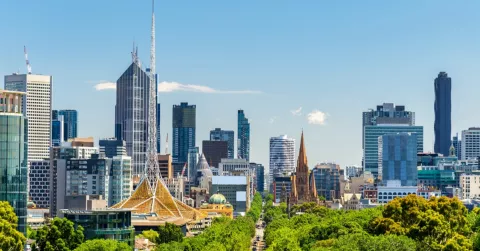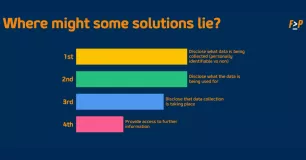
Tree-lined streets. Parks and green spaces. Urban forests. They enhance a city’s liveability, making them more enjoyable to live in. They protect us from harsh weather and filter air and water pollution.
The humble street tree is one of the most powerful strategies for enhancing the sustainability of a community, and therefore our cities. And more broadly, green infrastructure is an essential strategy for economic development, climate protection, health and wellbeing, as well as social inclusion.
But whilst it is easy to just make these statements, backing it up with robust research is often challenging. In 2017 a critical report from Smart Cities Council member AECOM - Green Infrastructure: A Vital Step to Brilliant Australian Cities - looked at the role of green infrastructure in building thriving cities.
AECOM’s research found that a 10% increase in the leaf canopy of street trees can result in an average increase in property values of $50,000. Governments don’t routinely place a value on green infrastructure as they do for roads, bridges, buildings and other infrastructure.
But, as the report says, they are worth millions of dollars for Australian cities. And it’s not simply about property values. One study cited found that doubling the leaf canopy in cities that have periods of prolonged high temperatures could reduce heat-related deaths by 28% and lower air temperatures as well as the temperature of concrete and asphalt. Another cost benefit? High temperatures cause asphalt to deteriorate more quickly. Trees can reduce surface temperatures and reduce cooling costs for buildings. Shouldn’t that be included in the green infrastructure value equation? Of course...
The report focused on street trees because they are the ones most likely at risk. They are commonly thought of as costs rather than essential infrastructure. As the report asserts, Australian regulations and business models don’t push developers, energy companies, cities or other entities to think of trees as ‘essential infrastructure’.
But the mood is changing, rapidly.
Smart Cities Council member the NSW Department of Planning, Industry and Environment (DPIE) is taking a leadership position, with the NSW Premier identifying 'Greening our city' as a state priority. DPIE has also identified placemaking as a state priority, whilst also investing $45M in using technology and data to enhance public spaces.
[As a side note, Placemaking NSW CEO Anita Mitchell will be speaking at the Future of Place Summit on August 25]
So, are we entering a perfect storm, where our work to shape the best places for people recognises nature as 'essential infrastructure', while acknowledging the enabling power of technology and data to enhance outcomes?
Well, Thomas Gooch - Landscape Architect and Founder of Office of Planetary Observations (OPO) - believes so. He also has signalled the coming wave of #NatureTech activity that will see the advanced fusing of technology application and data analytics to planning, protecting and restoring green infrastructure within our cities and beyond.
Gooch, along with a number of other government, private sector and academic peers will spearhead a project as part of the Smart Cities Council's Digital Twin Challenge to build out a series of knowledge resources for advancing landscape-based Digital Twins (announcement coming soon!).
There will be more coming on our NatureTech discussion through the Future of Place project and the Digital Twin Challenge over the next few years as we continue to accelerate the enabling opportunity of technology and data to value, protect and restore nature.



